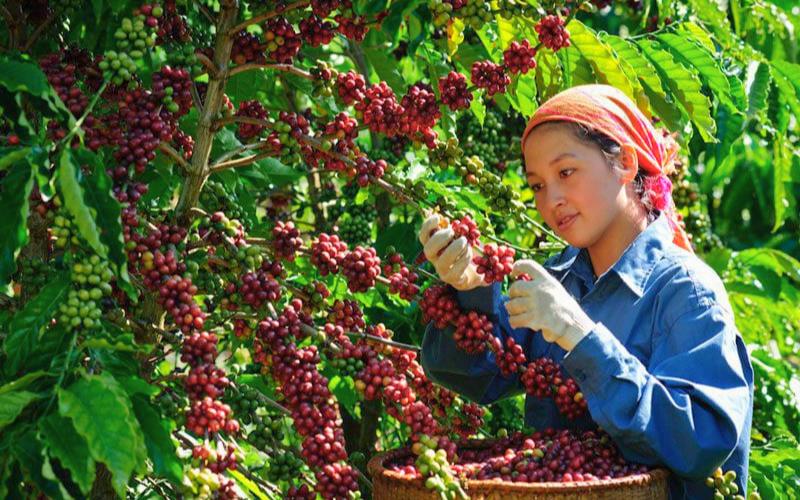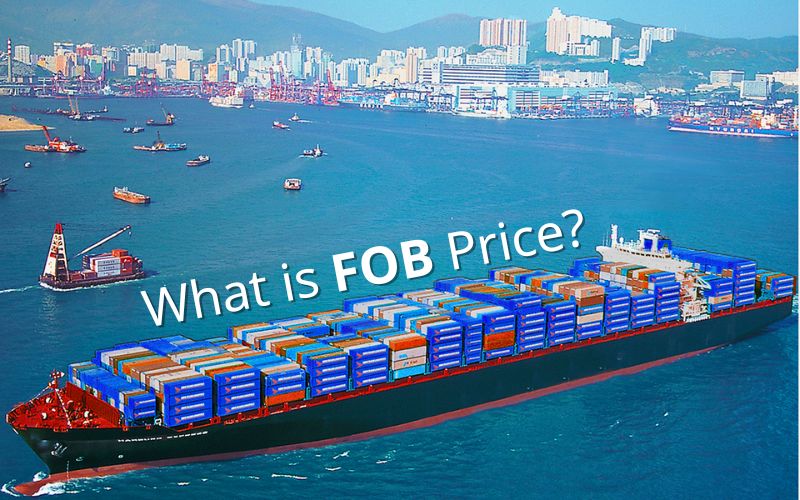Coffee prices today fluctuate continuously due to factors such as weather, supply and demand, and economic changes. Monitoring price fluctuations helps farmers, suppliers, and businesses in the F&B sector make necessary adjustments. Let’s explore the latest coffee price for today with Kamereo in the following article!
How much is the domestic coffee price today?
As of August 26, 2024, the coffee price in Vietnam is stable at around 119,000 to 119,800 VND/kg. The coffee market is primarily concentrated in the Central Highlands provinces such as Lâm Đồng, Đăk Lăk, Đăk Nông, Gia Lai, and Kon Tum.

You can refer to the detailed price list for each region below:
- In Bảo Lộc and the districts of Di Linh and Lâm Hà (Lâm Đồng), coffee is currently traded at 119,000 VND/kg.
- In Đăk Lăk, coffee prices in Cư M’gar are 119,800 VND/kg, while Ea H’leo and Buôn Hồ record prices of 119,700 VND/kg.
- In Đăk Nông, the coffee price in Gia Nghĩa reaches 119,800 VND/kg, while Đắk R’lấp records 119,700 VND/kg.
- In Gia Lai, Chư Prông has a price of 119,800 VND/kg, while Pleiku and La Grai both stand at 119,700 VND/kg.
- Kon Tum currently records a coffee price of 119,800 VND/kg.
|
Region |
Average Price |
Change |
|
Đắk Lắk |
119,800 VND/kg | + 500 |
|
Lâm Đồng |
119,000 VND/kg | + 500 |
|
Gia Lai |
119,800 VND/kg | + 500 |
|
Đắk Nông |
119,800 VND/kg | + 500 |
World Coffee Prices Today
At the end of the most recent trading session, the price of Robusta coffee in London for the September 2024 contract increased by 225 USD/ton, reaching 5,128 USD/ton. Meanwhile, the price for the November 2024 contract rose by 141 USD/ton, reaching 4,715 USD/ton.
|
Contract |
Settlement Price |
Change |
|
09/2024 |
5,128 USD/ton | + 225 (4.59%) |
|
11/2024 |
4,715 USD/ton | + 141 (3.08%) |
|
01/2025 |
4,513 USD/ton | + 133 (3.04%) |
|
03/2025 |
4,340 USD/ton | + 119 (2.82%) |
December 2024 Contract: Increased by 4.4 cents/pound, reaching 247.3 cents/pound. March 2025 Contract: Increased by 3.6 cents/pound, reaching 244.8 cents/pound.
|
Contract |
Settlement Price |
Change |
|
09/2024 |
247.30 cents/pound | + 4,40 (1.81%) |
|
11/2024 |
244.80 cents/pound | + 3,60 (1.49%) |
|
01/2025 |
242.60 cents/pound | + 3,30 (1.38%) |
|
03/2025 |
240.20 cents/pound | + 3,05 (1.29%) |
Overall, global coffee prices are being affected by market factors, economic downturns, and other elements. Coffee prices are likely to continue rising in the near future.

Today’s Coffee Prices at Kamereo
Kamereo was established with the goal of optimizing the food supply chain for F&B businesses. The platform offers comprehensive solutions for the F&B sector, particularly for restaurants and coffee shops.
Purchasing coffee for your business through Kamereo offers significant benefits:
- Stable and Diverse Supply: Reliable and varied coffee sources.
- Quality Assurance: Guaranteed product quality.
- Competitive Prices: Attractive pricing.
- Convenience: Saves time and effort.
- Professional Support: Assistance from a skilled team.

You can explore some of the best coffee products available at Kamereo below:

Roasted Coffee Powder 320g / アイスコーヒーブレンド粉【極深煎り】
105,000đ/PACK
150,000đ/PACK

Trung Nguyen I Ground Coffee 500g
104,220đ/PACK

Trung Nguyen S Ground Coffee 500g
88,020đ/PACK

Trung Nguyen Sang Tao 1 Ground Coffee 500g
123,120đ/PACK

Trung Nguyen Sang Tao 5 Coffee 340g
175,500đ/PACK

Trung Nguyen Suc Song Ground Coffee (Brown) 500g
129,060đ/PACK
Analysis of Today’s Coffee Price Fluctuations
According to experts, the strong increase in both Robusta and Arabica coffee prices is due to adverse weather conditions in Brazil and Vietnam, the world’s two largest coffee producers. This situation is impacting the global coffee harvest.
Analysts from Safras & Mercado report that, as of August 19, 2024, nearly 98% of Brazil’s new coffee harvest has been collected. However, weather challenges are leading to anticipated supply shortages.
A Reuters survey of 11 leading experts in trade and market forecasts indicates that the global coffee surplus from October 2023 to September 2024 will be around 700,000 bags. Additionally, the surplus for the following season (2024-2025) is expected to drop to just 150,000 bags, a significantly small number compared to global demand.
The market is expected to continue rising, especially for Robusta coffee, due to higher demand than supply and the lowest stock levels in 15 years, highlighting the current supply-demand imbalance. Furthermore, the depreciation of the USD, driven by expectations of the Federal Reserve lowering interest rates, has also contributed to the increase in coffee prices over the past week.
Frequently Asked Questions About Coffee Prices
What is FOB Price?
Before exploring today’s coffee prices in the international market, it is essential to understand the concept of FOB.
FOB stands for “Free On Board,” meaning “Free On Board” or “Delivered on Board.” In agricultural transactions, particularly for coffee, FOB is a crucial term.

Understanding FOB Price:
- Delivery Point: Under FOB terms, the seller is responsible for transporting the goods to the ship and loading them onto the ship at the port of export. Once the goods pass the ship’s rail, all subsequent risks and shipping costs are the buyer’s responsibility.
- Includes: FOB price includes the value of the agricultural product (e.g., green coffee beans), transportation to the port, loading fees, export documentation fees, export taxes, and other costs incurred before the goods are loaded onto the ship.
- Excludes: FOB price does not cover sea freight, marine insurance, and other costs incurred after the goods leave the export port.
Why Do Coffee Prices Fluctuate?
Coffee prices are influenced by several key factors:
- Weather: Extreme weather conditions (droughts, storms, or floods) can negatively affect coffee production, particularly during flowering and harvesting periods, often leading to higher prices due to reduced supply.
- Supply and Demand: When coffee consumption spikes during holidays or due to changing consumer trends and supply cannot keep up, prices rise. For example, during peak consumption periods like Christmas or Lunar New Year, significant price fluctuations are common.
- Government Policies: Changes in export/import taxes, agricultural support policies, or export quotas can directly impact coffee prices, though usually only in the short term. Such policies are often adjusted at the start of the year.
- Global Economic Fluctuations: Factors such as inflation, economic crises, or changes in exchange rates can affect coffee prices in the medium and long term, as coffee is a major export commodity for many countries.
- Pests and Diseases: Plant diseases (like mold or scale insects) that reduce coffee yield and quality can put upward pressure on market prices.

How to Predict Future Coffee Price Fluctuations
Predicting coffee prices can be challenging due to various influencing factors such as weather conditions, economic policies, and global supply and demand. However, you can gain insights into price trends by referring to reports from reputable organizations and companies in the industry:
- International Coffee Organization (ICO): ICO regularly publishes monthly and quarterly reports that provide detailed information on coffee production, consumption, and price forecasts. These reports are based on data from major coffee-producing and consuming countries worldwide.
- Commodity Brokerage Firms: Companies like Safras & Mercado and StoneX offer market analysis reports on coffee. These reports are based on weather forecasts, harvest projections, and global financial factors such as exchange rates.
- Industry Experts: Experts from research organizations or financial analysts often provide price forecasts based on market conditions and other influencing factors like plant diseases or coffee consumption trends.

By keeping track of these information sources, you can stay updated on future coffee price predictions.
Does the Global Coffee Price Affect Vietnam’s Coffee Prices?
Vietnam is the world’s second-largest coffee producer and the leading producer of Robusta coffee, accounting for about 40% of the global market share. Consequently, coffee prices on the London exchange have a significant impact on Vietnam’s coffee export prices. The London market is the primary trading platform for Robusta coffee, so fluctuations in this market directly affect Vietnamese coffee producers and exporters.
Additionally, coffee quality plays a crucial role in pricing. High-quality coffee typically commands higher prices, while lower-quality coffee may be subject to lower prices. The exchange rate between the Vietnamese dong and foreign currencies also significantly affects export profitability. A weaker local currency can increase profits from coffee exports.
Government policies, such as support for farmers and export/import taxes, can also impact domestic coffee prices in the short term.

When is the Best Time to Buy Coffee at a Good Price?
To purchase coffee at the best price, it’s essential to understand key market factors and consider the following optimal times:
- Before and During Harvest Season: During the harvest period, coffee supply increases, often leading to lower prices. In Vietnam, Robusta coffee is harvested from October to January, while Arabica coffee is typically harvested from September to November. These times are ideal for purchasing coffee at better prices.
- When Adverse Weather Information is Available: Poor weather conditions, such as droughts, floods, or crop diseases, can negatively impact coffee production and reduce supply. When news of such adverse weather conditions emerges, coffee prices may rise due to concerns about limited supply. This can be a good opportunity to buy coffee before prices increase significantly.

Following coffee market reports from reputable sources, especially during key times of the year, will help you identify opportunities to purchase coffee at more favorable prices.
Conclusion
The above is the coffee price for today that farmers, suppliers, and businesses in the F&B sector should be aware of. Please note that prices may vary based on various factors, so the provided prices are for reference only. Stay tuned to F&B Business Insights for the latest updates!
Read more:



